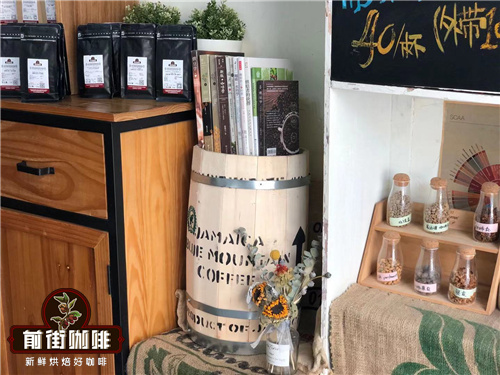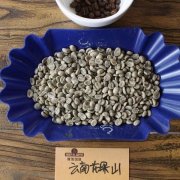What flavor is mantning coffee bean wet planing? What are the characteristics of mantenin green bean wet planing method? and

Professional coffee knowledge exchange More coffee bean information Please pay attention to coffee workshop (Weixin Official Accounts cafe_style)
What flavor is mantning coffee bean wet planing? What are the characteristics of mantenin green bean wet planing method? What's the difference between washing and washing?
Coffee beans are originally seeds in the fruit of the coffee tree. As shown above, the coffee we drink is roasted from the innermost green coffee beans. Coffee is plucked from trees in the form of ripe cherries, and after a series of post-processing, coffee beans are circulated all over the world. The simple process of post-processing includes flotation → peeling → sun drying → shelling → storage of raw beans and so on.
Post-processing methods have evolved in many ways due to geographical and climatic conditions and the ideas of coffee growers, but a summary of current treatments around the world can be roughly divided into four categories-sun, water, honey and wet planing.
Solarization is the most traditional method of post-processing coffee, that is, the whole fruit is dried in the sun, and finally the dried hard peel and inner shell are rolled and separated to obtain green coffee beans. During the process, the pulp and juice in the fruit will continue to ferment in the natural environment, so the coffee of the sun method can generally drink the fermented aroma. If the bean seeds with strong acid are fermented in the ideal sun, the flavor will be fascinating. The washing method of sun fermentation is also a matter of love and hate. Failed fermentation will lead to a sour smell of raw beans, and even baking will fail. Therefore, there is an improvement of washing method. After picking coffee beans first remove the pericarp and pulp, and then wash off the pectin layer attached to the endocarp (shell) with flowing water, and then dry in the sun. During the drying process, only the clean endocarp (shell) covers the raw beans, which is very simple. This approach minimizes variability in the process and is more likely to present the purest look of the coffee.
honey treatment
Obviously, there has been an improved washing method, but the earth people who keep turning their heads are not comfortable in the room. After removing the peel and pulp, they do not clean the action, but retain the pectin layer to dry together. Micro-fermentation can bring richer flavor changes to coffee, which has an impact on sweetness and thickness. Perhaps because of the honey-like sweetness or the sticky pectin layer, this treatment is also called honey treatment.
Wet planing method Because of the unique tropical rain forest climate conditions in Indonesia, the drying conditions of coffee beans are relatively harsh, and the drying rate of washing method is too slow, which may lead to failure of post-processing. Therefore, when the endocarp (shell) is dried to a certain extent, it will be ground and removed, and the coffee beans will be directly exposed to the environment for drying, so that the drying time can be effectively shortened. Because the endocarp is still wet when removed, this unique treatment is called wet planing. Also because of the short fermentation and drying time, Indonesian coffee is not high in acidity and has its unique herbal flavor and personality.△ When wet, shelled raw beans are easy to be damaged or even infected with mold. Beans in wet planing method are very common. We call them sheep's hoof beans. Originally, he wanted to solve the problem of falling long, but in the end, he still explained it in the way of falling long.
Important Notice :
前街咖啡 FrontStreet Coffee has moved to new addredd:
FrontStreet Coffee Address: 315,Donghua East Road,GuangZhou
Tel:020 38364473
- Prev

Mantenin wet planing method introduces the flavor characteristics of Indonesia Mantenin wet planing method
Professional coffee knowledge exchange more coffee bean information Please pay attention to the coffee workshop (Wechat official account cafe_style) what is the wet planing method? What flavor does the wet planing of Mantenin coffee beans highlight? What are the characteristics of wet planing? Wet planing (Wet-Hulling), that is, when raw beans are exposed to the sun
- Next

Why is Yunnan coffee called small grain coffee? How to distinguish the authenticity of Yunnan small grain coffee?
Professional coffee knowledge exchange more coffee bean information please follow the coffee workshop (Wechat official account cafe_style) Why Yunnan coffee is also called small grain coffee Q: we have three common coffee varieties: 1. Arabica 2. Robusta 3. Liberia Q: the Chinese agricultural sector classifies three varieties according to fruit size: large, medium and small. 1. Large grain origin
Related
- Detailed explanation of Jadeite planting Land in Panamanian Jadeite Manor introduction to the grading system of Jadeite competitive bidding, Red bid, Green bid and Rose Summer
- Story of Coffee planting in Brenka region of Costa Rica Stonehenge Manor anaerobic heavy honey treatment of flavor mouth
- What's on the barrel of Blue Mountain Coffee beans?
- Can American coffee also pull flowers? How to use hot American style to pull out a good-looking pattern?
- Can you make a cold extract with coffee beans? What is the right proportion for cold-extracted coffee formula?
- Indonesian PWN Gold Mandrine Coffee Origin Features Flavor How to Chong? Mandolin coffee is American.
- A brief introduction to the flavor characteristics of Brazilian yellow bourbon coffee beans
- What is the effect of different water quality on the flavor of cold-extracted coffee? What kind of water is best for brewing coffee?
- Why do you think of Rose Summer whenever you mention Panamanian coffee?
- Introduction to the characteristics of authentic blue mountain coffee bean producing areas? What is the CIB Coffee Authority in Jamaica?

